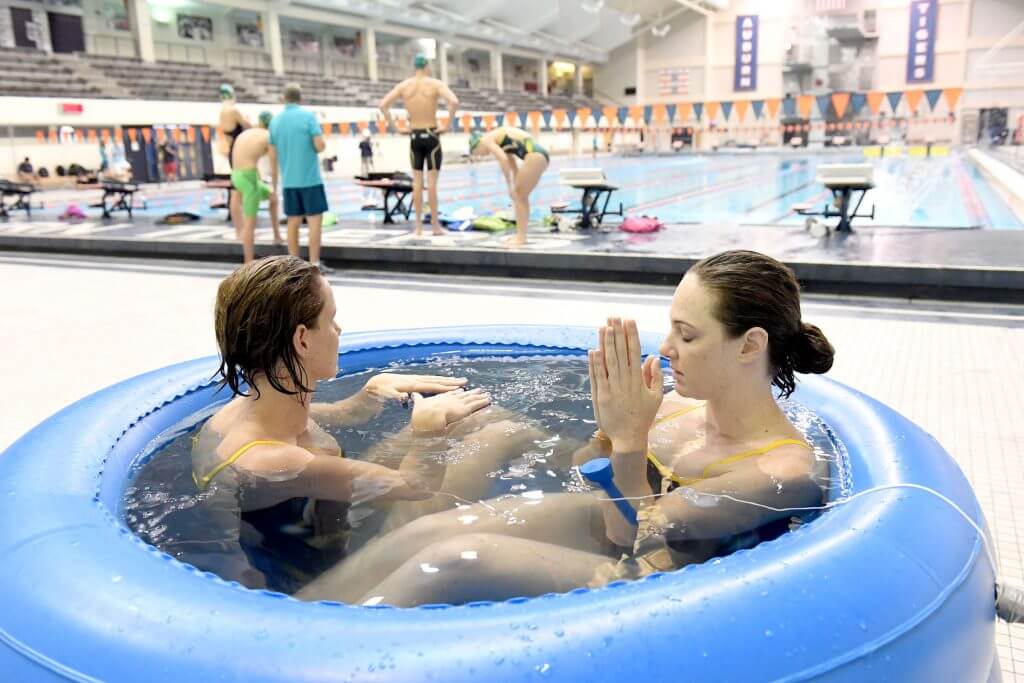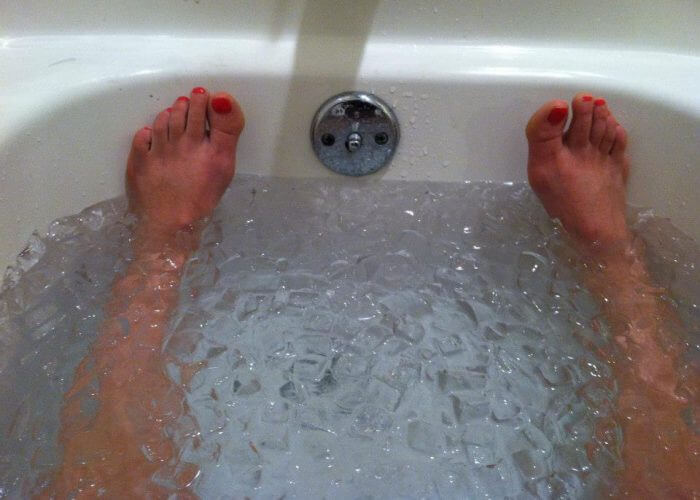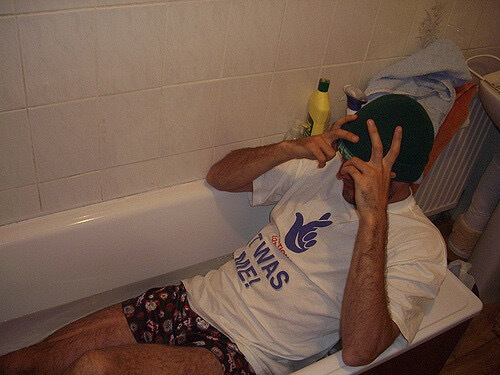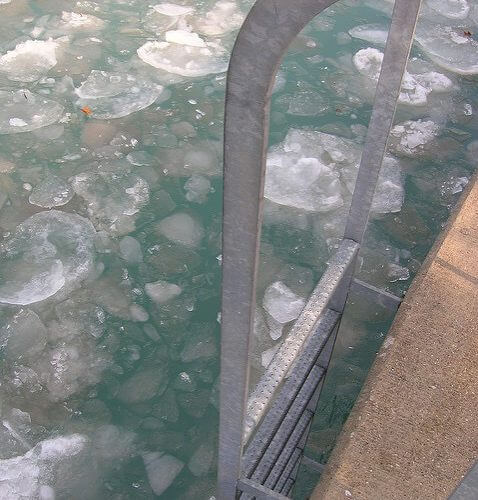The Hot Debate About Ice Baths

By Brie Harnden, Swimming World College Intern.
Recovery is a swimmer’s favorite word in the middle of a difficult training cycle. At a championship meet, it is the tedious but still welcomed process of long warm-downs, leg drains and stretching. But another common practice of ice bath recovery – also known as cold water immersion or CWI – is a widely debated technique with evidence suggesting that pain may not result in gain.
The Process of Recovery
Ice baths are a form of recovery used by athletes after strenuous workouts or in between sessions of a competition. Usually, a large bucket or bathtub is filled with cold water, and the athlete sits or stands before dumping 10 to 20 pounds of ice cubes. This results in temperatures between 45 and 60 degrees, bath lasting between five to 15 minutes. Those only going knee or thigh deep might wear hats, gloves, or sweaters to preserve some body heat. Some drink hot tea. Others pass the time with a book, social media or by talking to a friend.

Photo Courtesy: Kristy Kinzer
The Benefit of Ice Baths
Cold water immersion is used in hopes of reducing muscle inflammation and speeding recovery time. Among many other studied benefits, decreased muscular pain is the major attraction. At five-day-long championship meets, total rest time between prelims and finals can be as short as two hours. CWI is a quick, simple recovery option that helps swimmers feel good and perform well when it matters most.

Photo Courtesy: Fergal Carr
A decrease in delayed onset muscle soreness (DOMS) is another benefit, as reported by the British Journal of Sports Medicine. A common frustration for athletes after an especially difficult workout, DOMS usually peaks around 48 hours after workout completion and can last between eight and 72 hours. For some, DOMS is perceived as typical muscle soreness and discomfort; however, for others, it can be experienced as debilitating pain that prevents strenuous exercise for days to follow.
Even for average athletes, taking a few days off after every difficult workout is just not feasible. A 10-minute soak in cold water to prevent the delayed soreness is an appealing method. When used sparingly, ice baths can be a good way to relieve and prevent DOMS.
The Hidden Consequences of Ice Baths
Despite some proven benefits, an increasing number of studies now report decreased long-term performance and muscular growth attributed to CWI. Some athletes resort to ice baths as often as three times per week following strength training sessions. This Australian study demonstrates that the body can quickly adapt to ice baths, resulting in smaller muscle gains compared to others who did not use CWI. Lead scientist of the study, Llion Roberts, explains that the cells leading to muscle growth and increased strength can be stopped or dramatically slowed up to two days after an ice bath.
Further studies have highlighted the differences in recovery and muscle response in endurance sports versus strength-based exercise. In an even more recent study out of Australia, CWI was actually shown to boost mitochondria formation in endurance athletes.

Photo Courtesy: AuntJoJo, Flickr
As ice baths increase in popularity, their effectiveness become less clear. Proponents enjoy the pain relief more than anything and enjoy having ice baths as part of their recovery routine. However, evidence is beginning to surface that repeated CWI for strength trainers may actually be detrimental. For runners and other endurance athletes, there could be benefits to ice baths when taken at the proper times.
But for swimmers, who fall somewhere between strength and endurance athletes, finding the best recovery strategy can be difficult. It’s important to understand the benefits and risks of any and all exercise components before trying them. Enticed by the pain relief and recovery benefits that ice baths can provide, some swimmers may take the plunge. Others will give the cold shoulder and stick to other methods.
Commentary: All research was conducted by the author and does not necessarily reflect the views of Swimming World Magazine nor its staff.




Anicée Heylemans-Demeur
Ca je pourrai jamais même si c est excellent ??
Noam Laloya
Cian Devlin
PPSD 2017-2018
Most of pool that I go to hale only HOT showers.
That’s a ‘never forgot’ experience
Martyn McGrath in winter here we don’t need ice baths… the pool is good enough ??